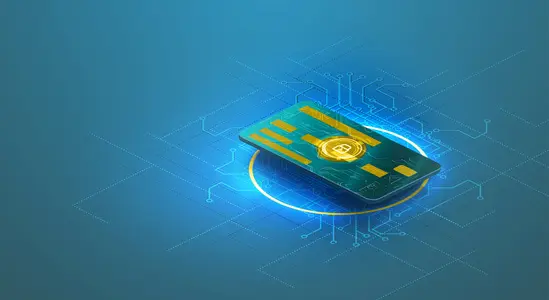Robots and humans are teamed up to tackle bank card fraud

Table of contents:
How does manual control work?
Manual banking processes are being increasingly overwhelmed by the growth of transactions - due both to the globalisation of banking and the promotion of e-commerce and mobile and digital banking - and card frauds exploit this security gap to increase their chances of success. As a result, the digitalisation of transactions makes digitalising their control advisable. "Fraud surveillance automation is a critical service that the sector will have to deal with sooner rather than later," explains Jason Pais, Director Technology & Continuous Process Improvement at Prosegur AVOS Tech.
The data speaks for itself:. According to the Bank of Spain, in 2020 card fraud claims grew by almost 46%. And this rise cannot be attributed solely to the effect of the pandemic because 2019 saw 42.6% growth in this type of fraudulent transaction. According to the Single Euro Payments Area (SEPA), the value of fraudulent transactions with cards issued by this entity totalled EUR 1.87 billion in 2019.
What benefits does the service provide?


Towards comprehensive risk management
The payment processor used by the financial institution processes and monitors the millions of daily transactions carried out, and scores them based on various risk factors in unusual or suspicious movements. Thus, the Payment Methods team responsible for controlling these transactions receives the information from these alerts in real time from the payment processor, but is usually materially incapable of reviewing and processing such a large volume. This results in delays, errors and duplications that increase the possibility of fraud
To address this deficiency, Prosegur AVOS proposes a hybrid person/machine anti-fraud surveillance model combining RPA (Robotic Process Automation), a team of specialist agents and a workflow model that links and coordinates both. This back-office technology is also integrated with the company's payment methods call centre as a front office serving as a visible face to the customer. It provides 24/7 service and includes a contingency back-up switchboard to support the bank if the system fails or goes down.
The RPA robot processes and analyses these files with the alerts virtually in real time, and through the workflow channels the most serious, based on the risk score, to human agents with the action protocol. For example, calling the entity or the owner to verify the transaction, cancel it or even block the account as a precaution if the affected user is not located.
It not only automates the monitoring, management and distribution of alerts but also automatically generates information on the responses in each case and that the bank must, by law, send to the payment processor, as well as the communication protocol with entities and insurers on alerts and actions. "We are talking about two tasks whose manual process is extremely time-consuming - time which could be much better spent on the priority of controlling fraud", says Ana Barcia, head of Productivity and Efficiency at Prosegur AVOS.
- It improves efficiency. Some use cases record 27% time savings that agents can spend on key tasks. One entity, for example, mentions a weekly saving of 500 hours in the file processing phase alone.
- Regulatory compliance. An increasingly stringent requirement, it also entails protecting the entity's brand reputation and its value as a competitive factor.
- It increases the capacity and speed of anti-fraud response that may lead to the reimbursement of the amount by the entity to its customers. In fact, the service responds faster than required by law.
- A more efficient response and prevention system can help the entity to negotiate better terms in insurance policies.
- The capacity to manage much more information translates into the ability to detect criminal patterns, for example when multiple transactions involving small amounts take place - one of the most common tricks to disguise the scam - .
- It unleashes human talent to focus on value-added activities such as strengthening preventative analysis, focusing on high-risk alerts and serving customers quickly.
- The transition is usually smooth, non-invasive and easily connects with the entity's systems and databases. It is a scalable model and processing capacity can be increased without increasing staff in the same proportion.
- As an outsourced service in a specialist company, "it not only guarantees systems are constantly up to date but, more importantly, the development of the complete model", adds Jason Pais.
In fact, this constant development implies a qualitative leap. Furthermore, the incorporation of Artificial Intelligence enhances the ability to identify fraud patterns, "a crucial advance to move from a reactive strategy to a preventative one", explains Ana Barcia. And at the same time, this new technological capacity is bolstered with the human qualification of agents trained in level-2 analysis for fraud patterns.
But, in addition, it evolves towards a comprehensive management model for bank fraud. Not only does it improve card control, it also incorporates the analysis of other key risks in the sector, each with its particular diagnosis and processing, such as international transactions, transfers through Bizum and specialised fraud in electronic commerce and online banking.
.jpg)
.webp)
